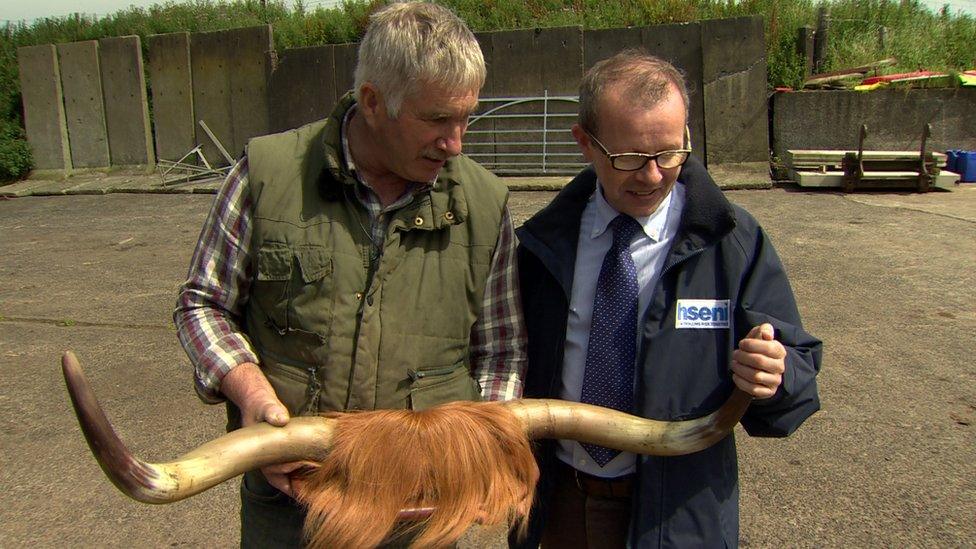How common is it for walkers to be killed by cows?
- Published
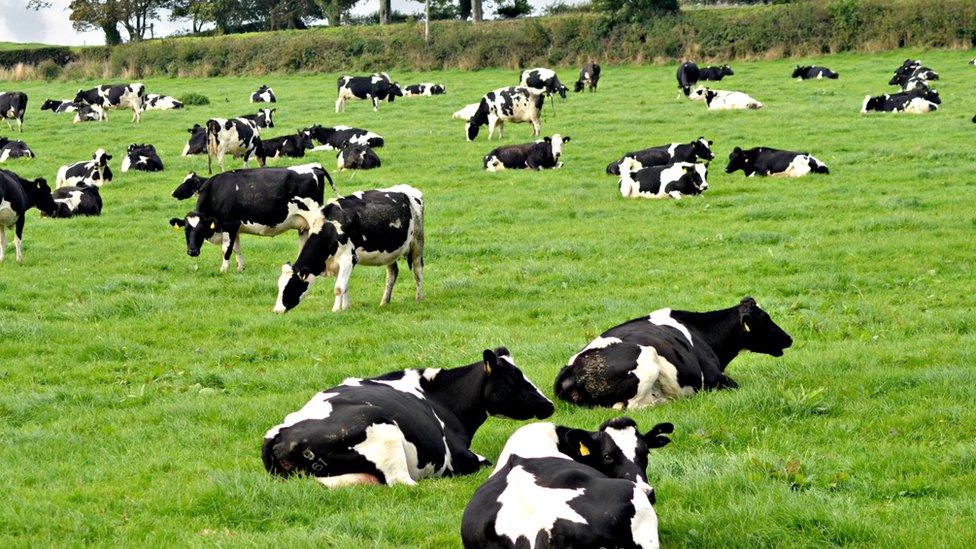
Incidents involving cattle injuring people remain rare, according to the most recently available data
A deputy head teacher killed by cows this week was the second dog walker to die after being fatally injured by cattle in Yorkshire this year.
Dave Clark was attacked in fields near Richmond on Monday.
In May, an 82-year-old man died from injuries he sustained while walking with his wife and dogs in the Yorkshire Dales.
But how common are these incidents and what can walkers do to protect themselves?

How many cow-related deaths are there?
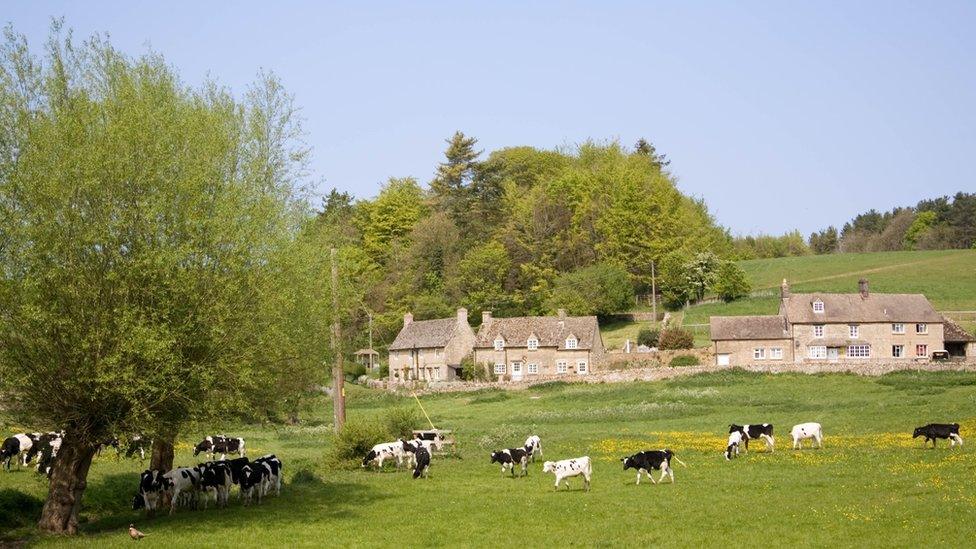
Members of the public are rarely killed by cattle, according to Health and Safety Executive (HSE) data.
It investigates these incidents along with those that involve farmers and farm-workers.
Between 2015-16 and 2019-2020 the HSE investigated 142 incidents. Only 22 of them resulted in a death and the majority related to people who worked with cattle.
Members of the public accounted for only four of those deaths, the HSE confirmed.
It added that it investigated 65 non-fatal incidents involving cattle and members of the public over the same period.

What is it like to be attacked by a cow?

Mark Hartree was covered in scratches after the cow knocked him to the ground and sat on him
Such incidents may be rare but they can still be extremely frightening.
Mark Livesy was with his 82-year-old mother and friends when they were attacked by cows on land at Cartmel Fell in Cumbria.
His mother suffered a broken arm and her 15-year-old dog Harvey was killed during the 30-minute incident.
"It literally became a frenzy. The poor dog went to the ground and they just started to trample him," Mr Livesy said.
"My mother was knocked to the ground and they started trampling on her."
Mark Hartree, 53, was running in the Pentland Hills Regional Park on the outskirts of Edinburgh when a cow knocked him to the ground.
"She stood over me and collapsed her legs so she was lying on top of me and started thrashing her head against my head," he explained.
He said the episode happened so quickly and there was nothing he could do.
"I was in shock afterwards, it was traumatic, and the moral of the story is don't be complacent with cows."

How should walkers keep safe?
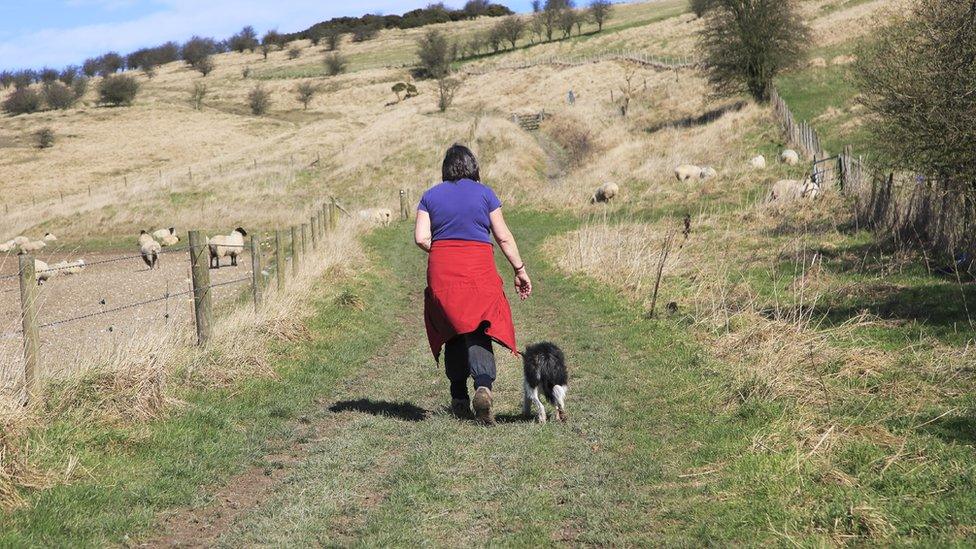
The best advice is to keep your dog on a lead when near any type of livestock
The National Farmers Union (NFU) suggested walkers keep themselves safe by following the Countryside Code, external.
It said cattle could become aggressive if they felt threatened, particularly when they had calves with them and particularly if a dog got between them and a calf.
"If walking with a dog it [the code] recommends keeping dogs on a lead and under close control around farm animals and horses, but to release them if threatened or chased by livestock," a spokesperson said.
The organisation has campaigned for legal permission to allow farmers to divert public rights of way where livestock was present, though that has not been supported by some walking organisations.
The Ramblers Association said it would remind walkers to be "mindful and respectful" of farms and farm animals, particularly during spring when cattle would be rearing their young.
It has published full advice, external on how to avoid antagonising cattle and what to do if they acted aggressively.

Key ways to stay safe
Look out for any animals and watch how they are behaving, particularly bulls or cows with calves
Try to avoid getting between cows and their calves
Be prepared for cattle to react to your presence, especially if you have a dog with you
Move quickly and quietly, and if possible walk around the herd
Keep your dog close, on a short lead, and under effective control
Remember to close gates behind you when walking through fields containing livestock
Don't hang on to your dog if you are threatened by cattle - let it go as the cattle will chase the dog and not you
Don't put yourself at risk by walking close to cattle
Don't panic or run - most cattle will stop before they reach you; if they follow just walk on quietly.
Source: The Ramblers Association

Follow BBC Yorkshire on Facebook, external, Twitter, external and Instagram, external. Send your story ideas to yorkslincs.news@bbc.co.uk or send video here.
- Published24 September 2020

- Published23 September 2020

- Published2 September 2020
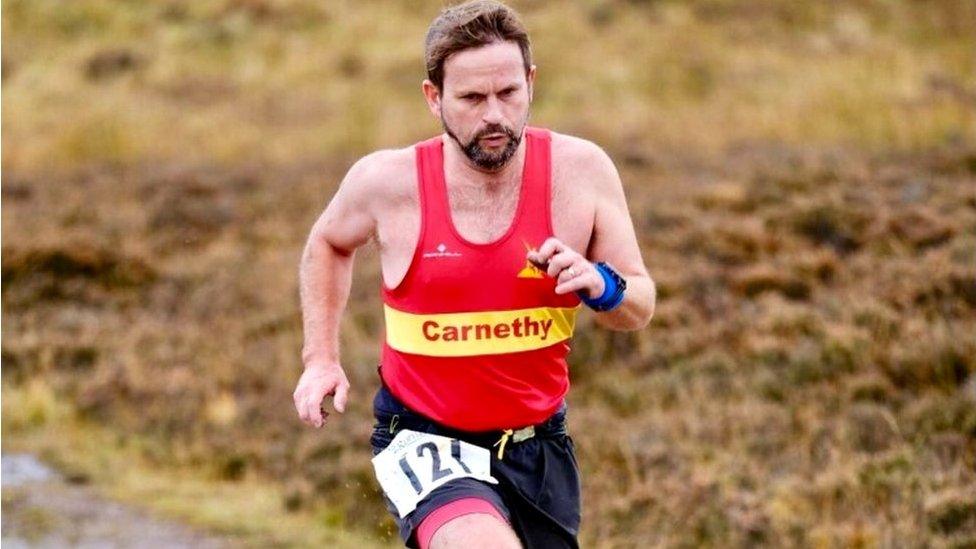
- Published26 July 2017
